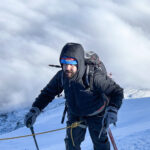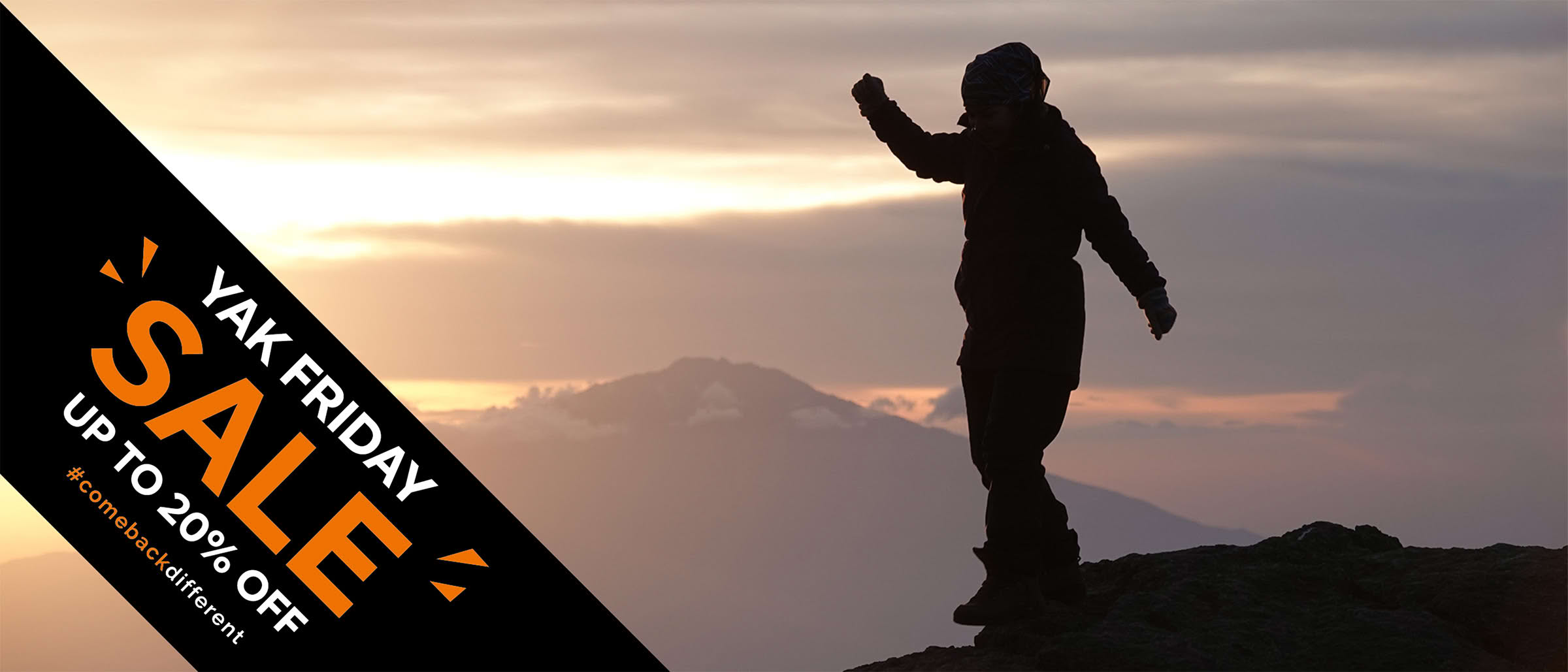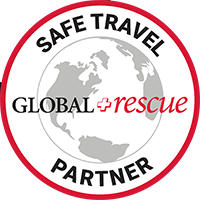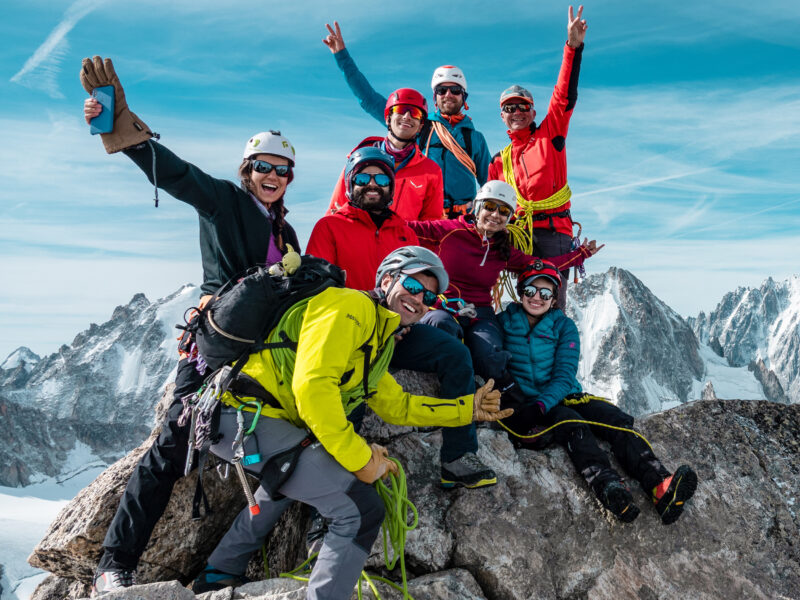BY Jean Louis Moukarzel | September 24 2025
Am I an Alpinist? My Journey to Climb the Eiger
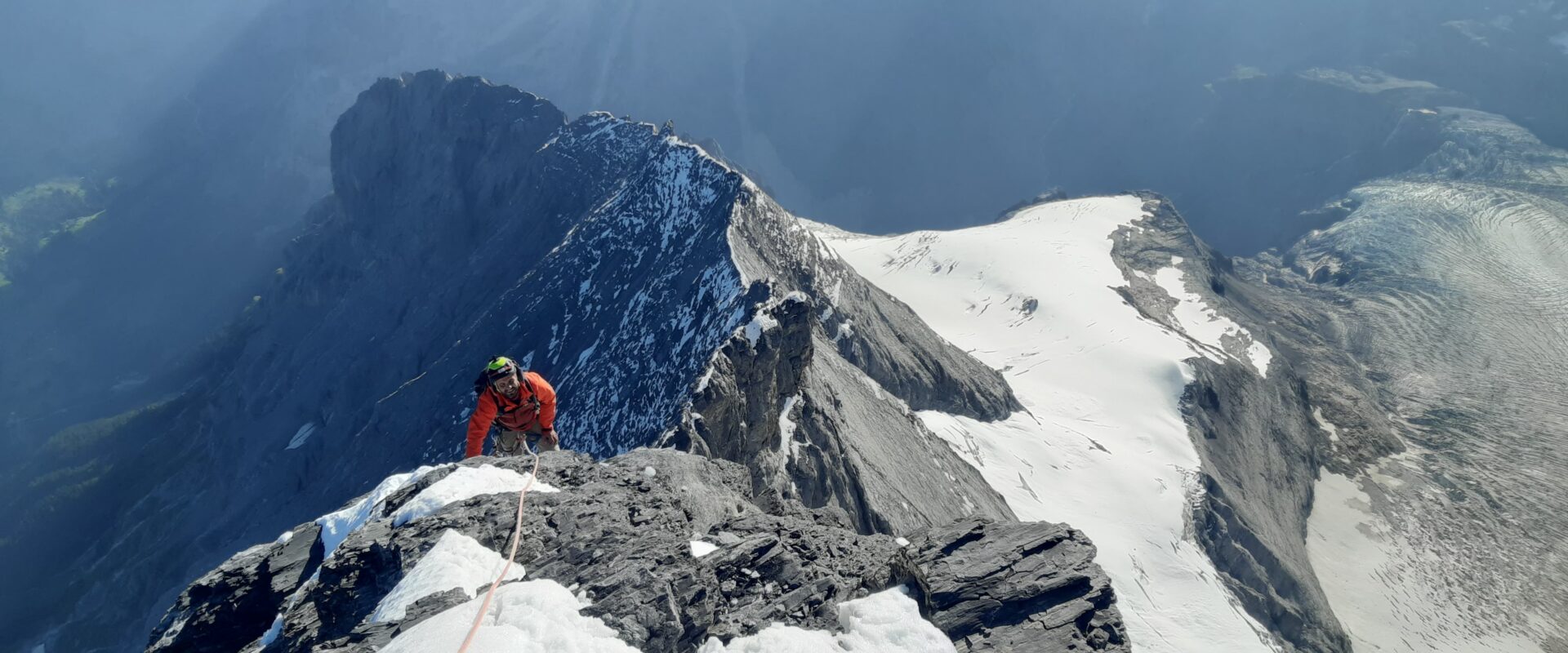
The first time I heard of the Eiger was coincidentally on the first night I arrived to Tanzania to
attempt my first mountain at the time, Kilimanjaro. Not sure how the conversation took us there
but I remember Rami clearly mentioning the North face of the Eiger as one of the toughest
climbs around the world. My amateur thinking went like this: “Oh so that’s what a North face is,
it’s not just the brand.” But I also took mental note of the Eiger.
There is a certain aura proper to the Alps. The towering peaks and the mixed terrain always
called to me way more than any other destination in the world. I also always thought there was a
certain prestige about being called an Alpinist. Since I do not use words lightly, I always
wondered about when I could call myself one, in a time when even some rock climbers started
calling themselves mountaineers.
When I summited the Matterhorn last year, there was a sense of relief and accomplishment that
was second to none. It’s a beautiful mountain even to the objective touristic eye, and one where
I’ll have the honor to bring my kids over to one day and say “It’s pretty, right? Your dad once
stood on top.” And I remember that night over dinner asking about what would come next. Not
that I was ready for it, but just to show hunger. And so a couple of months later, specifically a
late afternoon on September 24 2024, Rami pings me a link to the Eiger with nothing else. I
laughed and told him it’s funny how he knows I don’t need more convincing than that, and that’s
how the project was born.
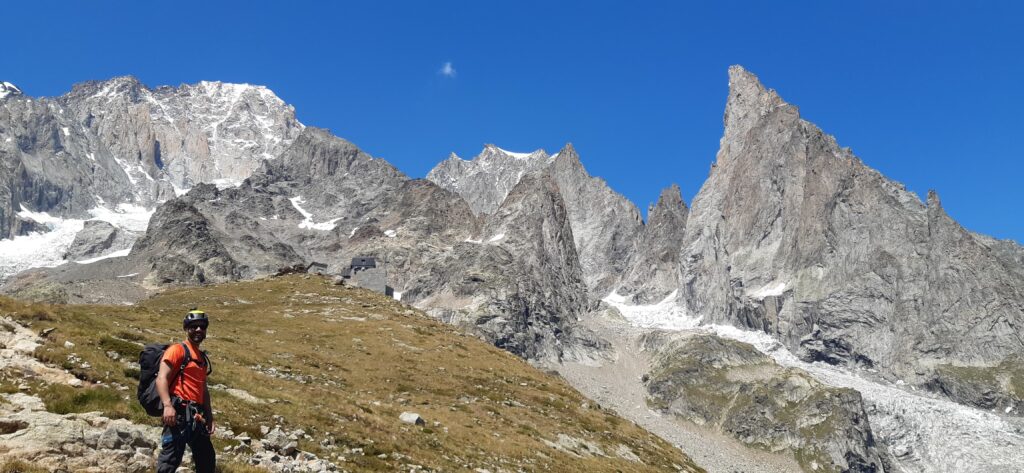
To say I was particularly nervous about it from the start would be a lie. I just let time pass and
went on normally with my life. It would all come crashing down though 3 months before the trip
when I was hospitalized with mononucleosis. The doctor told me my spleen was inflated and I
was forbidden from doing any physical exercise for the next 6 months. I couldn’t understand it or
accept it at first, especially because it was due to a problem I couldn’t even feel or gauge. I
eventually stuck to my diet and my meds and somehow made a miraculous recovery within a
month, albeit while losing 9 kilos in the process, mostly in muscle. I did my best during the next
2 months to get back in shape and, before I knew it, I was on my flight to the Alps.
Being back in Chamonix is always special. It was the Mecca for Alpinism and it also became my
own for the last 3 summers, almost becoming a second home. It was familiar enough by now for
my demeanor to be that of a local when I come here. Up until this point, I had always
approached my Alpine objectives with the understanding that it may not always be possible. The
weather and the conditions can surely interfere, and that is the case for all alpinists. But my own
skills and preparation can also interfere as well. I had by now been used to the condition of “if
you’re ready”. I was told I wasn’t for the Matterhorn last year and, even when I attempted it with
really good conditions, there was still an air of uncertainty and whether I’ll actually make it in
time. All of this to say that up until now, I operated in an environment that pushed me towards
the better but still understood (my surroundings and myself included) that I wasn’t up to the level
where summits like the Matterhorn were a casual Saturday morning plan.
I approached the training and acclimatization phase with a hungry mentality. I asked for
feedback every day. I asked my guide to steer me in the right direction even if it meant away
from the Eiger. I just wanted to become a better alpinist, if I could ever call myself one by now.
We eventually made it to the hut at the start of the Mittellegi ridge that we tackle to climb the
Eiger. That night in the refuge I looked around at everyone there and thought “Why the hell
would these people be ready for it and I wouldn’t be? We all look the same.” And I always had
this approach to life. At some point during elementary school, I somehow got dragged into competing in the long jump competition and I would never accept to go first. I always thought I
needed to see what other people achieve for me to do better. It was just the way my brain was
wired. And so after every climb, even the Matterhorn, my brain would trick me into believing that
if I did it, why can’t all my friends do it? What’s the blocker? I couldn’t really figure it out on my
own until a loved one pointed out my own mentality for me. She told me “You always look at
people and believe you can break their records and achieve more than what they did because
they are no different than you and that’s amazing. But you also need to understand you’re
special enough to achieve things that others cannot replicate.” I think my climbs would’ve been
easier had I realized this earlier.
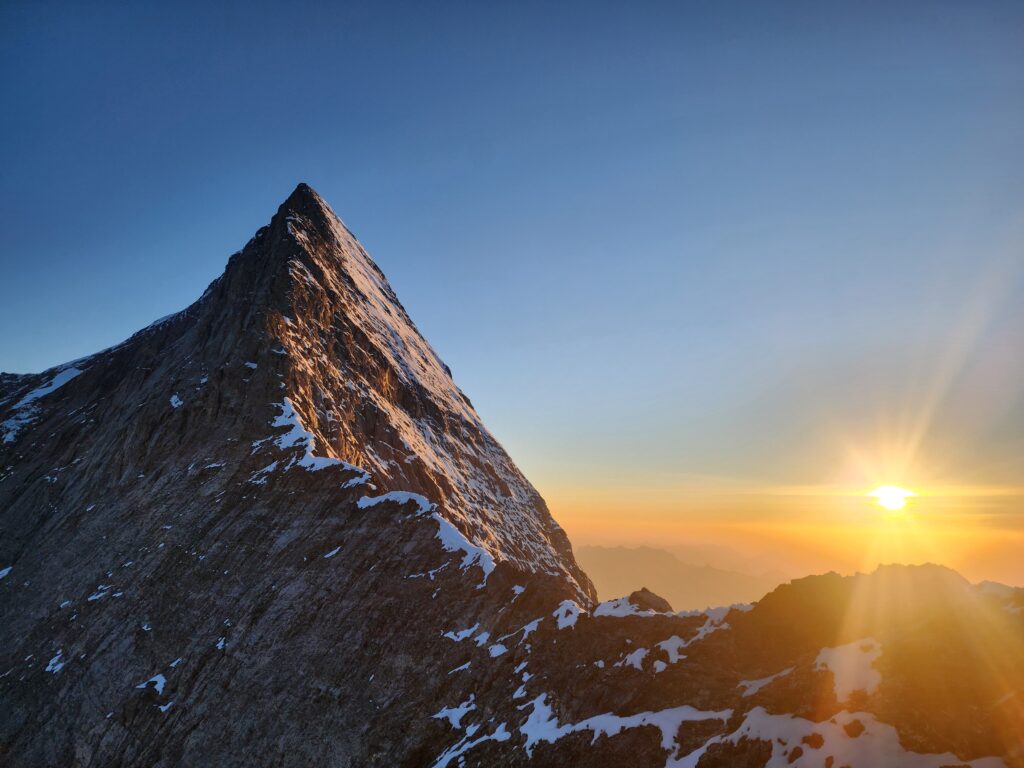
Once we got on the ridge at 4:30AM, the rhythm was relentless. When I tell the story, I compare
the climb to a final exam in alpinism. There’s everything that’s getting thrown at you in quick and
random succession: climbs, scrambles, snowy narrow ledges, fixed ropes, abseils… Unless you
know me or have read my piece on the Matterhorn last year, you wouldn’t know that I’m afraid of
the void. It’s gotten better over the years and with the repeated exposure but I don’t really do it
enough, so it creeps again on me sometimes. The whole ridge is quite exposed and it’s slightly
okay when I’m climbing up, but it’s even more impressive when I’m walking straight and have to
place my feet accurately on the snow-trodden path while looking down at Grindelwald on one
side, the glacier on the other, and helicopters flying below us just to remind me how high we
are. To cope with this, I kept repeating the same 3 sentences again and again to give me
purpose and keep me focused. I’ll break them down below:
Move with intention: I mean the way is right there and if you asked anyone to follow a set of
marbles on the ground they would. When you remove what’s around them though and replace it
with a drop of a couple hundred meters on either side and add in the wind, it somehow becomes
difficult. So I kept repeating to myself that my feet will not go except where I mean them to go.
And it’s kind of the same with life, one should always go wherever they’re going with all their
heart.
Respect the edge but do not fear it: the first part is way more straightforward than the second
one. But if I ever got to close to it in my mind and performed well, it’s when I cancelled out the
void around me and, by respecting the edge, my mind reduced the world to the tunnel-vision of
this narrow ledge in front of me. As long as I respect those boundaries, all will be well.
This is the sense of security you crave: this is the emotional one. For those of us who climb,
we all remember that first time on a wall when we wouldn’t trust the belaying system. I
remember mine. My route done, my arms getting more and more exhausted by the second, but
then how the hell can I trust this rope to lower me down safely? Why should I? By
understanding the system with time and practice, we know don’t even have to think about it. For
alpinists and mountaineers, at least in my circle, I get a lot of questions about the reasons why.
Why do you do what you do? What hole are you trying to fill in your life? Is your life not precious
enough for you to risk it like that? And that’s the thing, it is precious. It is probably more precious
than any of the lives of the people asking these questions. It’s just that, at least personally, I
value it a bit too much along with the sense of security. And it is this sense of security in specific
that I find lacking from our day-to-day lives and in our interactions with people. How many
friendships or relationships have you found yourself in that didn’t allow you to feel safe enough
to love and express? How many jobs didn’t allow you to fully be yourself and be in your closet?
How many times have you met strangers and didn’t know how much of yourself you can give because even when it seemed safe, it just wasn’t enough? And that scares me. But a rope
above the void? Call me crazy, but we went through wars together and I’m fine trusting it.
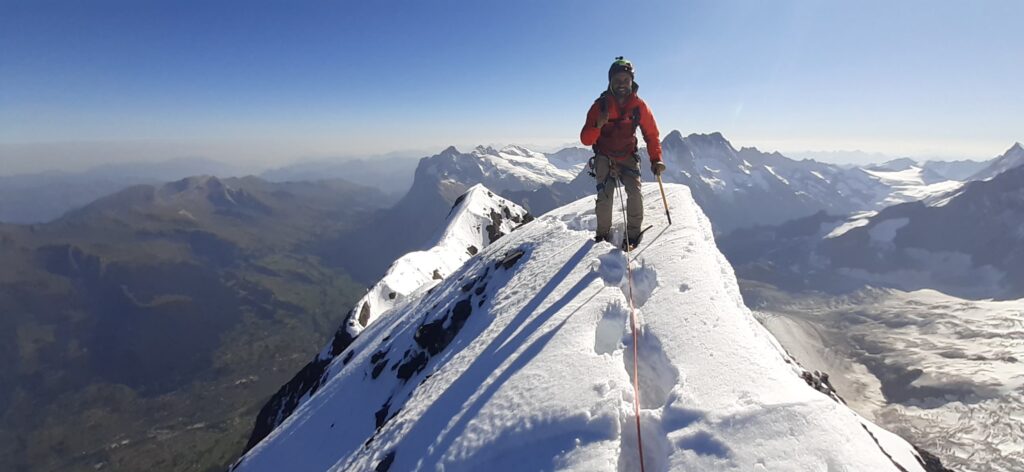
The summit of the Eiger is not even half of the way. Once you’re up there, the rest of the ridge
stretches in front of you across the massif and you realize that there’s no time for celebrations
yet. The summit barely even feels like an achievement when you see the long day that’s still
ahead of you. Even the crux of the climb is still ahead of you by then. I went through the day just
thinking about the food and shower at night and, before long, we were at the col to take the
glacier and that’s where we took a moment to rest. My guide was packing most of the gear as
we wouldn’t need it anymore. I was having my sandwich and a Coke and thinking “Damn, I just
did the Eiger. I just put my mind to it and went for it.” There was no drama in it. No ifs, buts and
maybes. It was a mental graduation, like becoming part of a bigger league where I do
understand what the mountain is and what it will take from me. I can always get more efficient
and I’ll always come to it with humility but everyone on the sidelines can now know I’m up for it,
and I should know that too.
My guide congratulated me. I looked at him and asked: “Am I an Alpinist now?” He said as he
coiled his rope “Yes, yes you are, and a pretty good one.”
About Life Happens Outdoors
At Life Happens Outdoors, we believe in the power of nature to transform lives. As proud members of the Adventure Travel Trade Association (ATTA) and the World Travel & Tourism Council (WTTC), our team of certified guides and outdoor professionals is committed to the highest standards of safety, sustainability, and excellence.
Discover more about our story and mission on our Meet LHO page, or explore our curated adventures such as the Tour du Mont Blanc Trek, the Climb of Kilimanjaro, and Chasing the Northern Lights.








